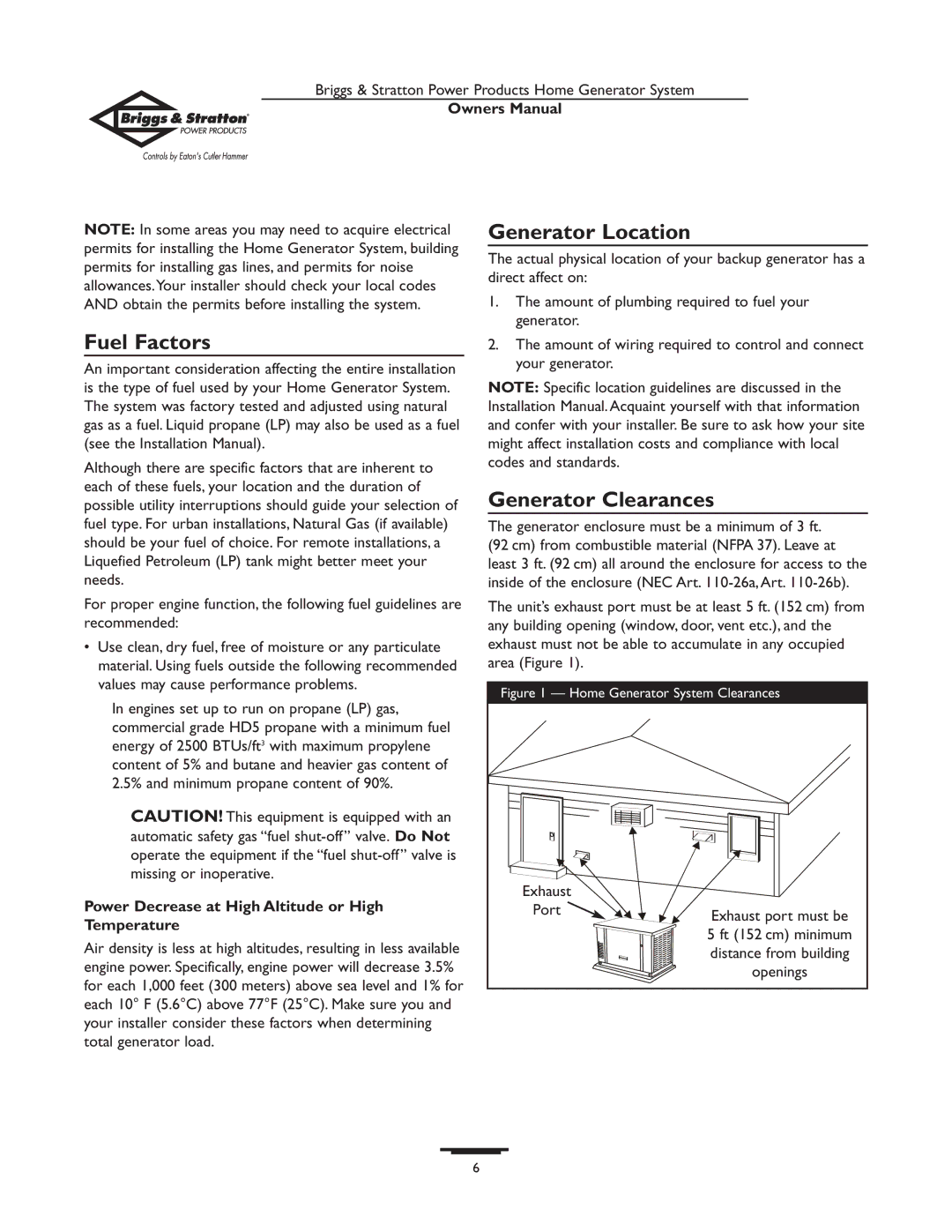190839GS specifications
Briggs & Stratton 190839GS is a versatile and powerful generator that caters to the needs of homeowners, contractors, and outdoor enthusiasts alike. Known for its reliability and performance, this generator is designed to provide a steady power supply during emergencies or when additional electricity is needed on job sites.One of the standout features of the Briggs & Stratton 190839GS is its robust 8500 running watts and 10500 starting watts. This impressive wattage allows it to power several appliances, tools, and electronics simultaneously, making it an ideal choice for both residential and commercial applications. This makes it particularly useful during power outages, ensuring that essential devices like refrigerators, lights, and medical equipment continue to operate smoothly.
The generator is equipped with a powerful 420cc OHV engine that is engineered for durability and longevity. Its overhead valve engine design reduces emissions and enhances fuel efficiency while providing excellent performance. The engine's design also contributes to quieter operation, which is a significant advantage when using it in residential areas or during outdoor activities.
Mobility is another key characteristic of the Briggs & Stratton 190839GS. It comes with a rugged wheel kit and a collapsible handle, allowing for easy transportation and setup wherever power is needed. This portable design is perfect for taking to job sites, camping trips, or even tailgating events, ensuring that you have reliable power access whenever and wherever you require it.
The generator features a user-friendly control panel with multiple outlets, including 120V and 240V options, accommodating various devices and tools. The inclusion of a digital wattage display provides real-time monitoring of power consumption, enabling users to manage their load efficiently.
Safety is paramount, and the Briggs & Stratton 190839GS incorporates several safety features, including low oil shutdown, which prevents engine damage by automatically turning off the generator when oil levels are too low. Additionally, the generator's sturdy construction and weather-resistant design add to its longevity and ensure that it can withstand the elements.
Overall, the Briggs & Stratton 190839GS generator combines power, efficiency, portability, and durability, making it an exceptional choice for anyone in need of a reliable backup power source or portable electric supply. Whether for emergency use or recreational activities, this generator stands out in its category for delivering performance and peace of mind.

